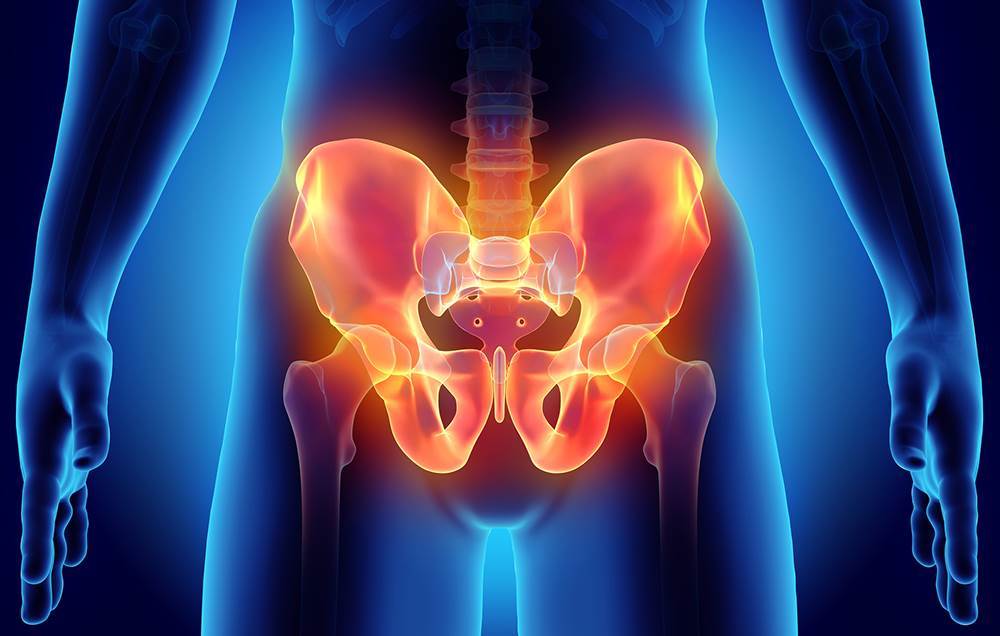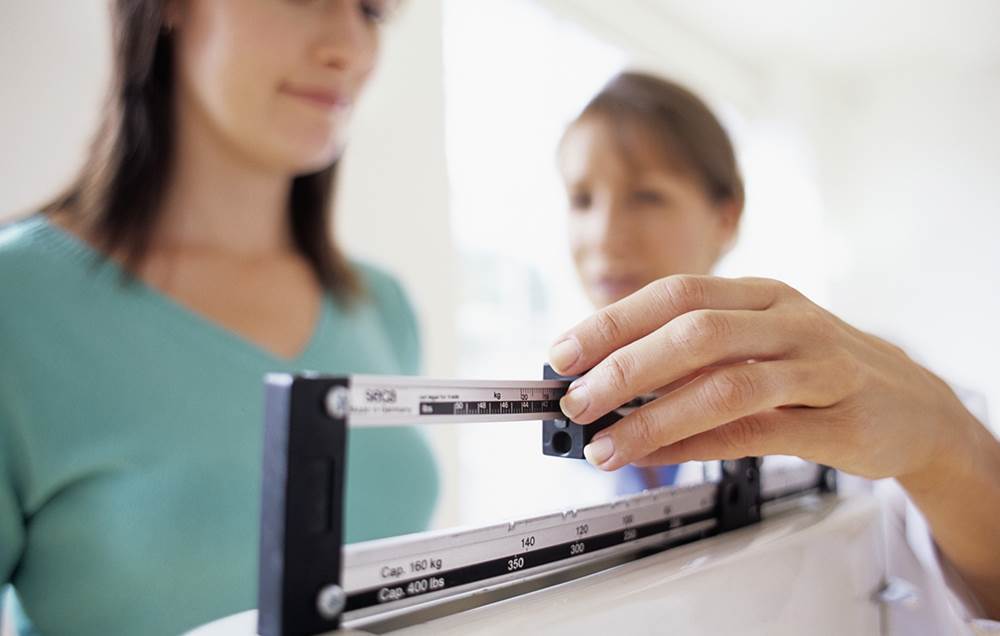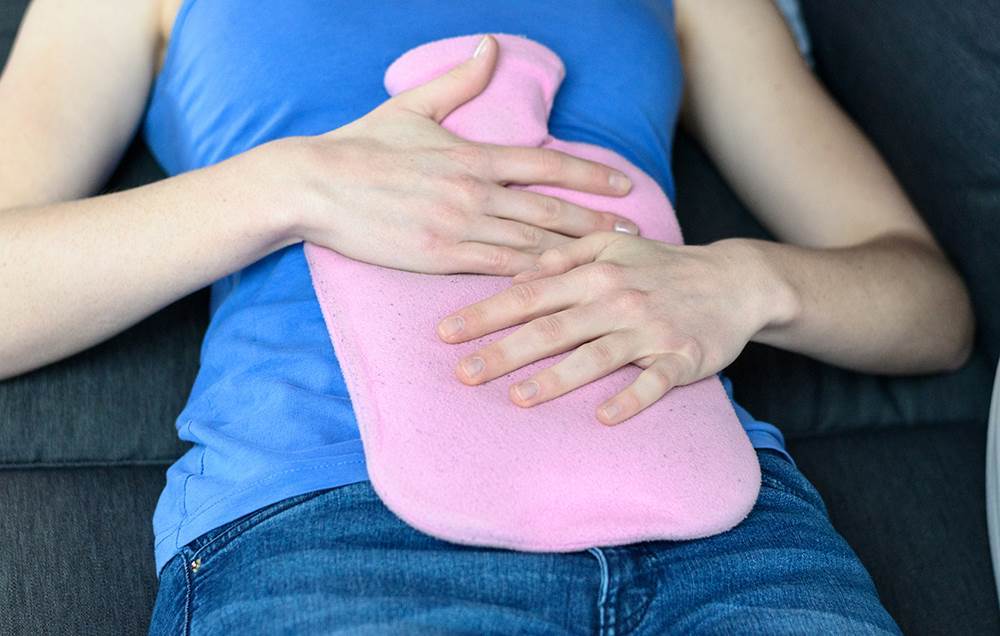Over 30% of us complain of frequent bloating, according to a recent study. While PMS or dietary boo-boos (eating a few too many gassy veggies or drinking carbonated beverages) are often to blame, sometimes it can indicate a more serious health problem, says gynaecologist Dr Sherry Ross . See your doctor ASAP if you notice any of the following along with chronic bloating:





Pelvic pain
Although rare, it could indicate ovarian cancer, especially if it’s accompanied by other symptoms such as feeling full quickly while eating and suddenly having to pee or poop a lot. “This is caused by an accumulation of fluid in the abdomen, a condition called ascites, and/or pressure from an ovarian mass against your abdomen or pelvis,” explains gynaecologic oncologist Dr Steve Vasilev. But only about a third of all women are aware that any of these symptoms are a sign of ovarian cancer.
What to do:Don't panic, since most of the time these symptoms point to a more benign condition, such as fibroids. But you should see your doctor ASAP to get checked out. The two tests used most often to screen for ovarian cancer are transvaginal ultrasound (a test that uses sound waves to look for masses on your ovaries) and the CA-125 blood test (if you have ovarian cancer, levels of the protein CA-125 are high).
Weight loss
About 1% of the population has coeliac disease, a condition in which your body has an autoimmune reaction to gluten that damages your intestinal lining. But many people with celiac are either undiagnosed or misdiagnosed. While the most common signs are diarrhea and weight loss, about half of all adults with coeliac have some signs not related to their GI tract, including anemia, skin rashes, headaches and early stage osteoporosis, says Dr Deevya Narayanan.
What to do:See a gastroenterologist, who can order a blood test that looks for certain antibodies in your blood that indicate coeliac disease. If it’s positive, you’ll need an endoscopy so your doctor can take a small tissue sample from your small intestine to analyse it for damage. If you do have coeliac, treatment is a strict gluten-free diet. But don’t try to go cold turkey on gluten before doing this test and talking to your doctor, or you could end up with a false negative.
Mega abdominal cramps
It’s easy to dismiss these pains as part of your time of the month or even a stomach bug, but if they’re on the lower left side of your tummy you may have diverticulitis, a condition in which small pouches develop in the lining of the lower part of your colon and become inflamed, says Ross. While it’s traditionally been thought of as a disease for old folk, there’s been a rise in cases among people under the age of 40. (Researchers aren’t sure why, but one theory is it’s due to obesity and a low-fibre Western diet.)
What to do: Terrible cramping, especially if it’s accompanied by fever, warrants an immediate trip to your doctor's office. You'll likely need blood, urine and stool tests to rule out other sources of infection, and if diverticulitis is still the most likely culprit you'll probably get a CT scan. Treatment is antibiotics; you'll also be put on a liquid diet for a few days while your bowel heals.
After you recover, you can prevent recurrences by eating more fibre. You may also want to consider something called the low-FODMAP diet, which stands for fermentable oligo-di-monosaccharides and polyols, suggests Dr Stephen Hanauer. That means eating foods low in the carbohydrates fructose (found in fruit and honey), lactose (in dairy), fructans (in wheat, garlic, and onions), galactans (in legumes), and polyols (sugar-free sweeteners), and stone fruit, such as apricots, cherries and nectarines.
Funky-smelling vaginal discharge
Almost 5% of all reproductive-aged women (ages 18-44) have experienced pelvic inflammatory disease (PID), a condition in which an untreated STD such as chlamydia or gonorrhea travels from the vagina into the fallopian tubes or uterus where it causes fever, chills and--if left untreated--infertility. But in the early stages, symptoms can be subtler, such as mild pelvic pain, irregular bleeding, or trouble peeing, notes Ross.
What to do: See your gynaecologist, pronto. Your doctor will do a pelvic exam, test you for chlamydia and gonorrhea, and run urine and blood tests to check for infection. Sometimes they will also need to do ultrasounds or even a laparoscopy (inserting a tiny camera through a cut in your belly button to check your interior lady parts) to determine how far the infection has spread. Treatment is antibiotics, and, in very rare cases, surgery.
Bloody diarrhea
Bloating accompanied by frequent tummy pain and the runs can often be a sign of an inflammatory bowel disease such as Crohn’s disease or ulcerative colitis, both of which cause inflammation of your digestive tract, notes Narayanan. Up to 40% of the time patients also have non-GI symptoms such as vision problems (usually eye pain and blurred vision), skin rashes and fatigue.
What to do: Your primary care physician can refer you to a GI specialist, who will run a battery of tests, including blood tests, to look for inflammation; stool tests for bacteria or parasitic infections; and an endoscopy to examine and biopsy parts of your digestive tract. The good news is there are a host of new, effective treatments out there, such as anti-inflammatory drugs like sulfasalazine (Azulfidine) and immune-system suppressing drugs like Infliximab (Remicade) or adalimumab (Humira).
In addition to Rx fixes, you may want to consider adding some tofu or tempeh into your diet: Soy protein seems to reduce the severity of inflammatory bowel disease.










